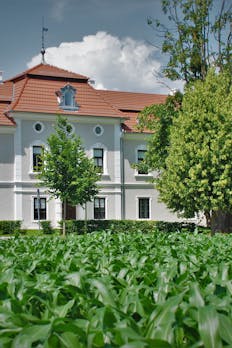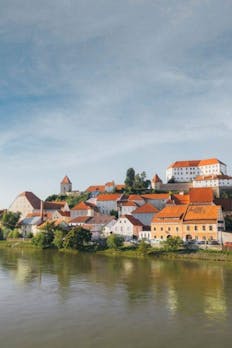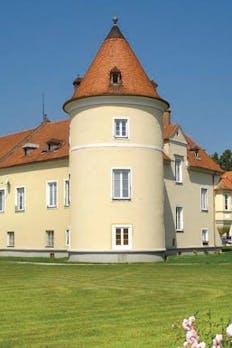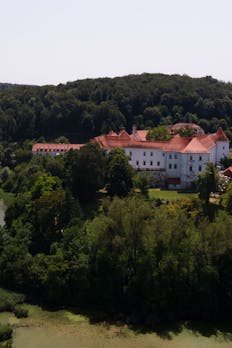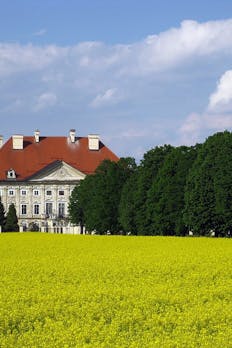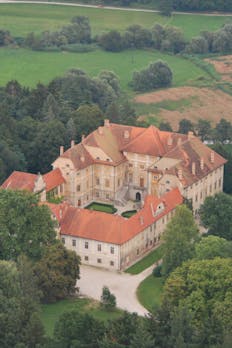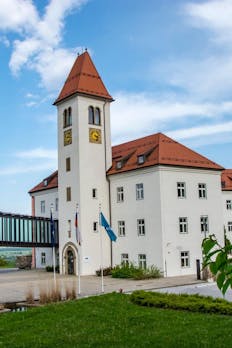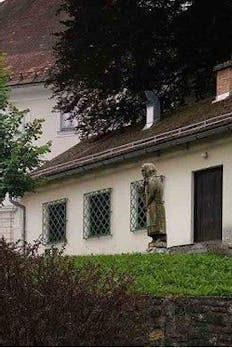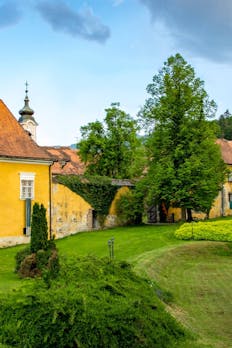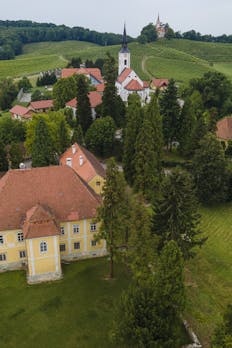The history of what was once a lowland island or water castle dates back to the first half of the 16th century, when a manor with four wings and Gothic-Renaissance portals was built. The first owner of the castle was Count Gregor Regal, who named the place Kranichfeld, which translates to “crane’s field.” Today, the castle enjoys a reputation as the cultural and social center of the Municipality of Rače.
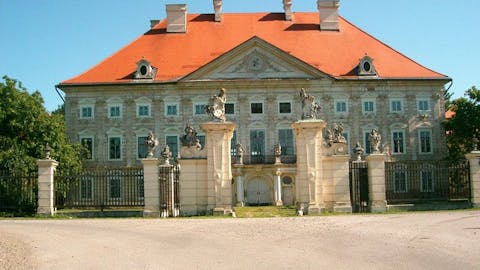
Castles and Manors
Maribor Castle
Maribor Castle
The Maribor Castle stands on the northeastern edge of Maribor’s old town center and houses the Regional Museum Maribor. It was built between 1478 and 1483 by Emperor Frederick III.
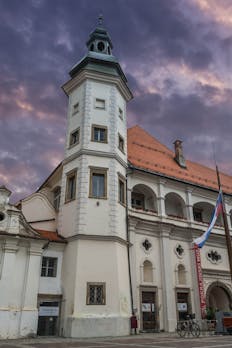

Ormož Castle
Ormož Castle
Ormož Castle stands in the southeastern part of a Bronze Age settlement, protected by an earthen rampart and a defensive moat. In the last third of the 13th century, the Lords of Ptuj began building the castle complex. Today, the castle operates as part of the Ptuj–Ormož Regional Museum.
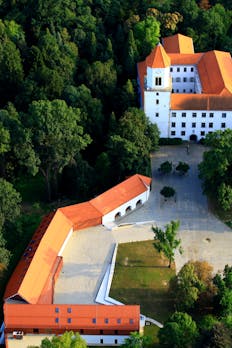

Borl Castle
Borl Castle
Borl Castle above the Drava River in the Haloze region has always played an important role due to its strategic location on the Hungarian–Croatian border. Originally a Hungarian border stronghold, it likely existed as early as the first third of the 12th century or even earlier.
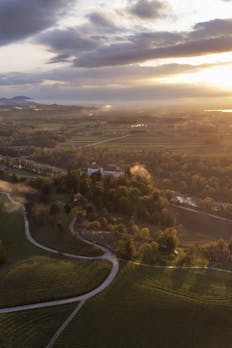

Velika Nedelja Castle
Velika Nedelja Castle
From afar, the mighty castle with its four defensive towers dominates the view, accompanied by a beautiful church. According to legend, it got its name from a battle that took place precisely on Easter Sunday. At the request of Frederick III of Ptuj, the Teutonic Order came in 1199 to this then-uninhabited land and wrested it from marauding Hungarians.


Vurberk Castle
Vurberk Castle
Vurberk Castle stands on a strategically important hill above the Drava River. The castle was first mentioned in 1238, when it was owned by the Counts of Hollenburg or the Lords of Vurberk. Today, the castle is in ruins, with only the Renaissance defensive ring and walls with towers and an entrance featuring a Renaissance portal preserved, yet it still serves as the venue for numerous events and gatherings.
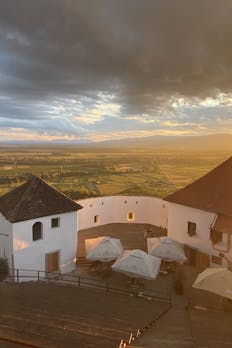

Cmurek Castle
Cmurek Castle
Cmurek Castle, located right on the border with Austria, rises above the Mura River and was first mentioned in written sources in the 12th century, when it was owned by the Spanheim family. Today, it houses the Museum of Madness, which presents the history of the castle and its surroundings through exhibitions, focusing on the activities of the psychiatric hospital that operated in the castle during the second half of the 20th century.
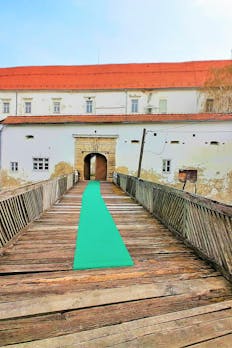

Jarenina Manor
Jarenina Manor
Jarenina Manor, located in the settlement of Jarenina, was first mentioned in the early 12th century as the property of the Benedictine monastery from Admont. The manor is still owned by the Benedictines today and houses the renowned Dveri PAX wine cellar and restaurant.
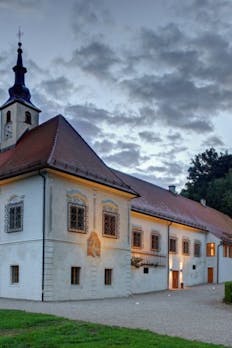

Strnišče Manor (Sternthal)
Strnišče Manor (Sternthal)
Sternthal Manor was built on the site of a farmstead commissioned around 1830 by Adolf Schönfeld. The construction of the manor marked the beginning of the settlement of Sternthal, or Strnišče, known today as Kidričevo. Since 2014, Sternthal Manor has served as the new seat of the Kidričevo municipal government.
